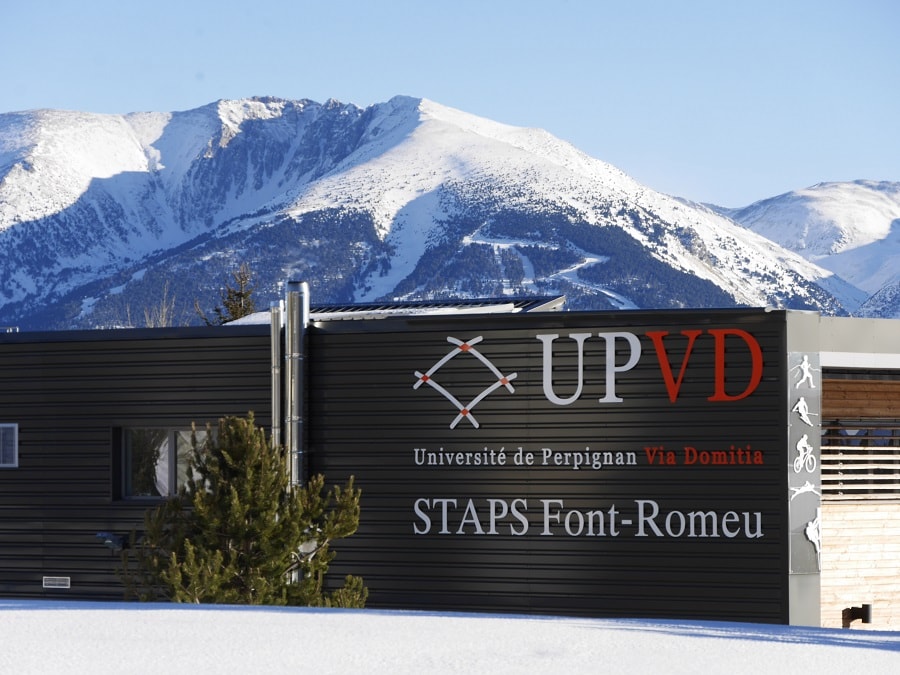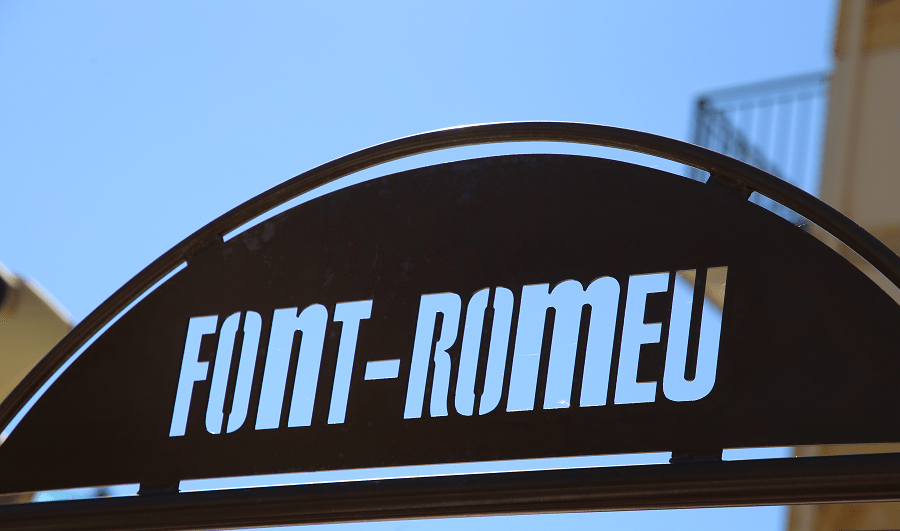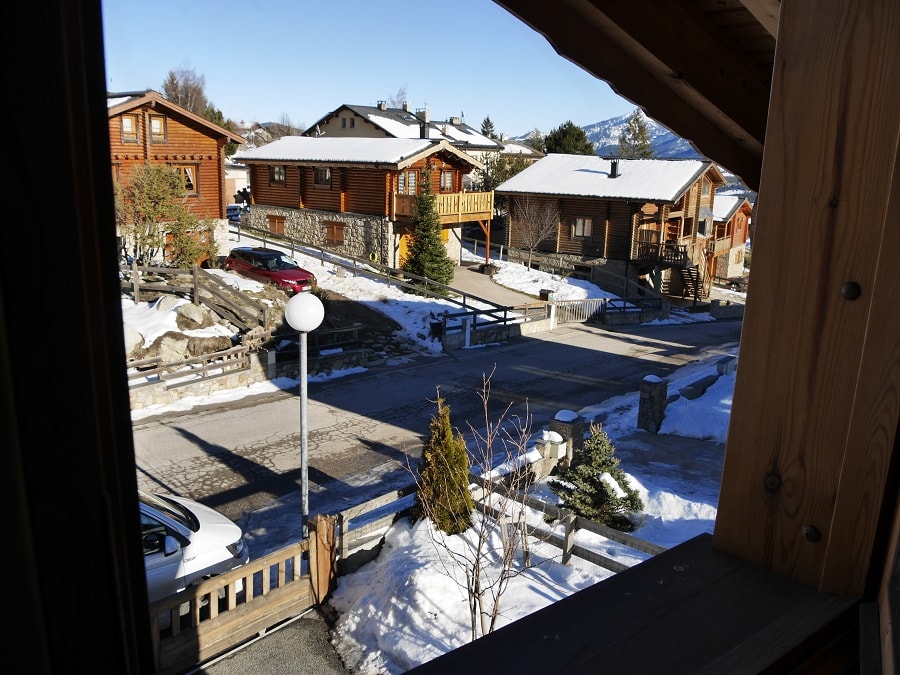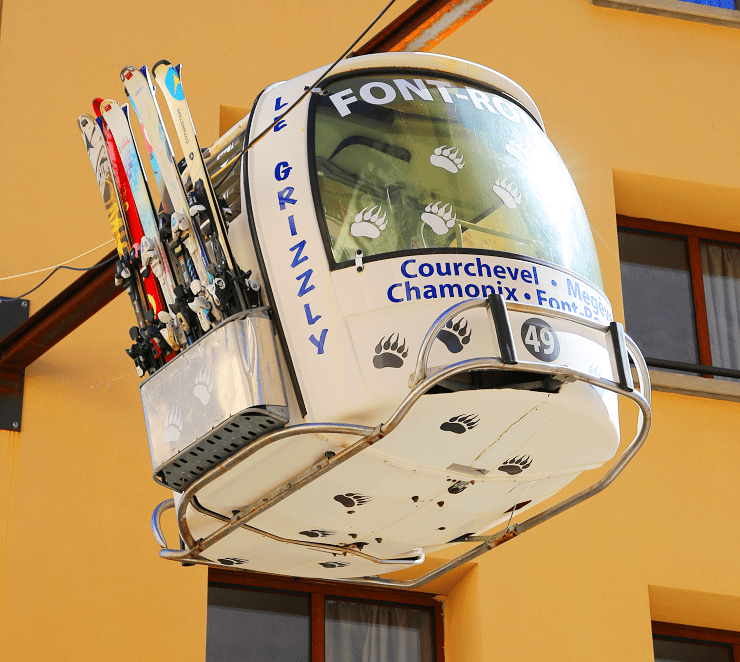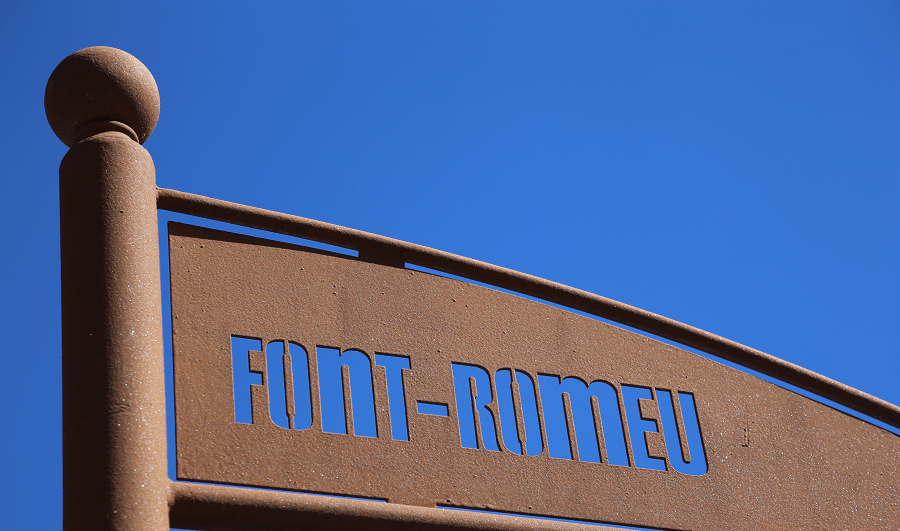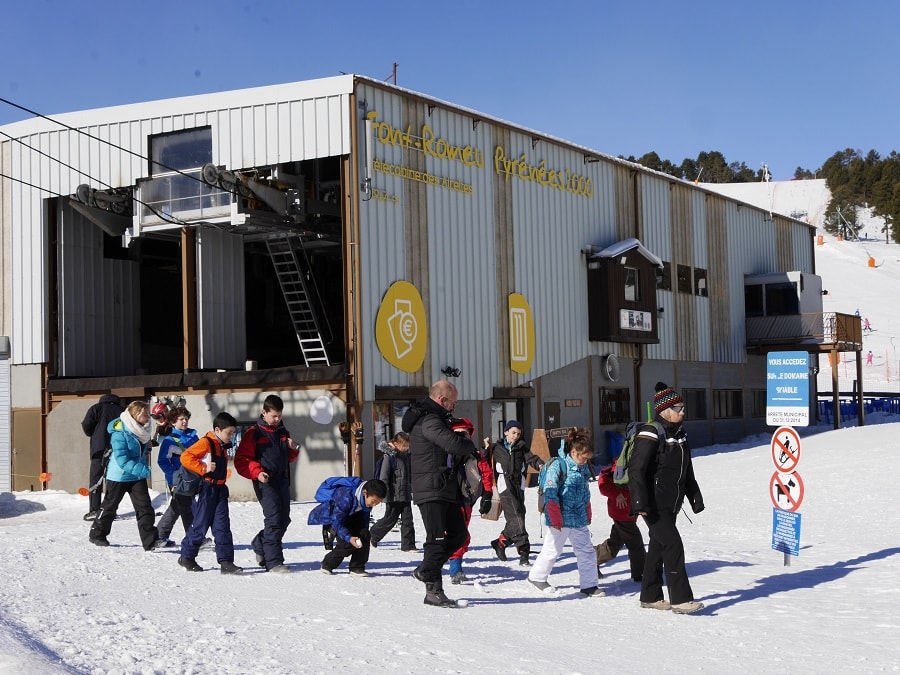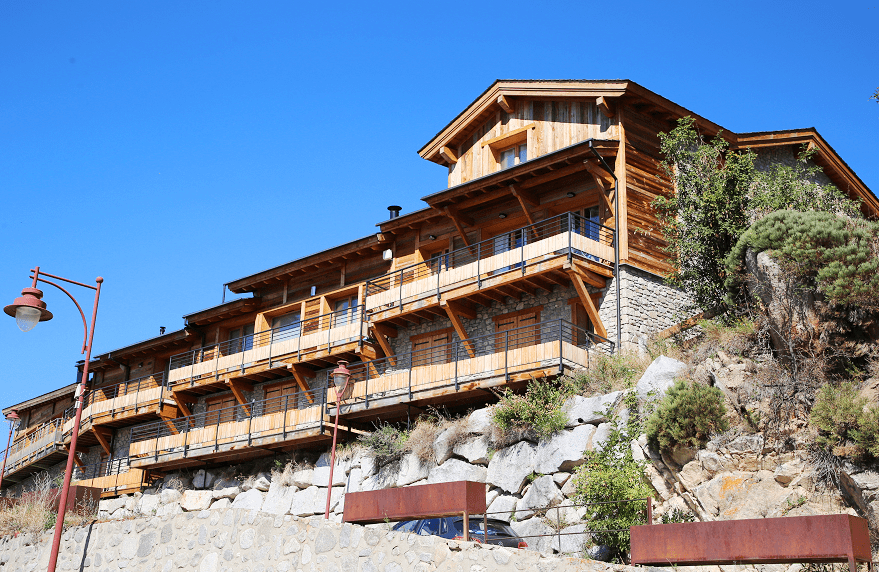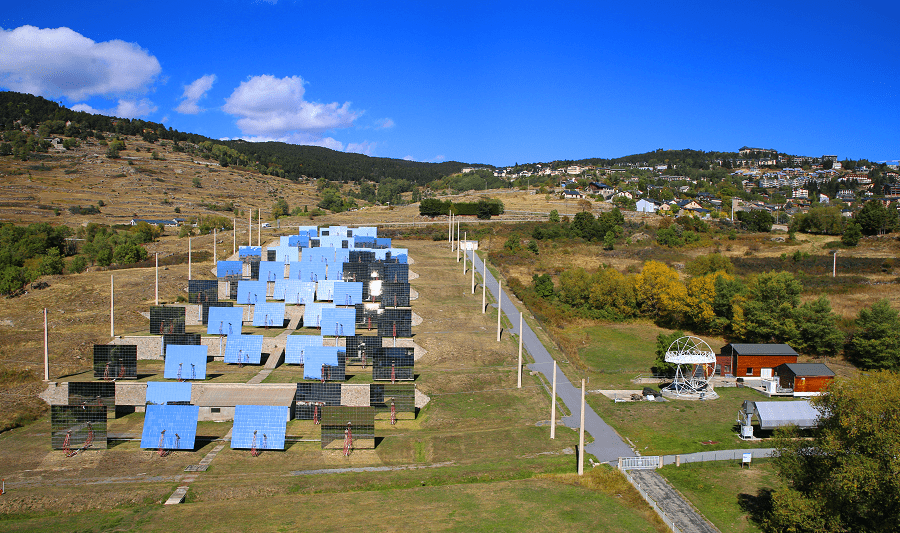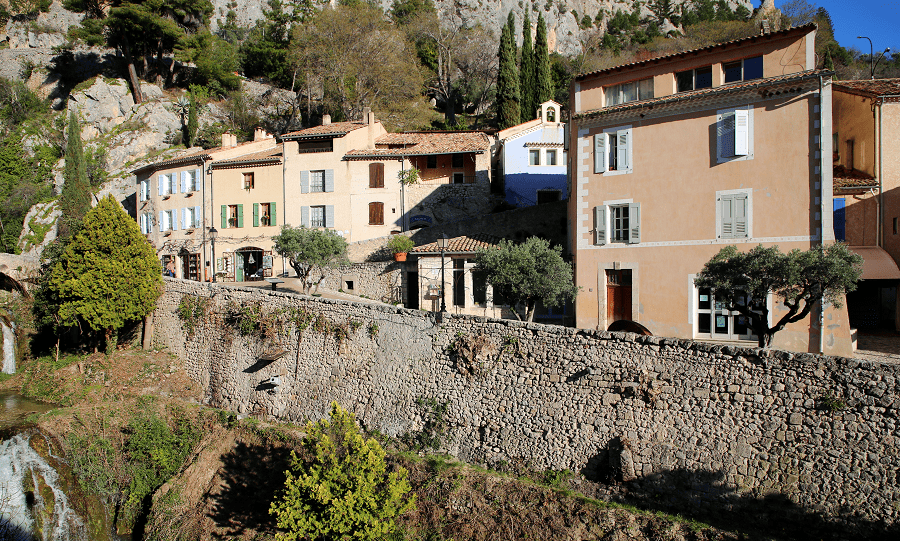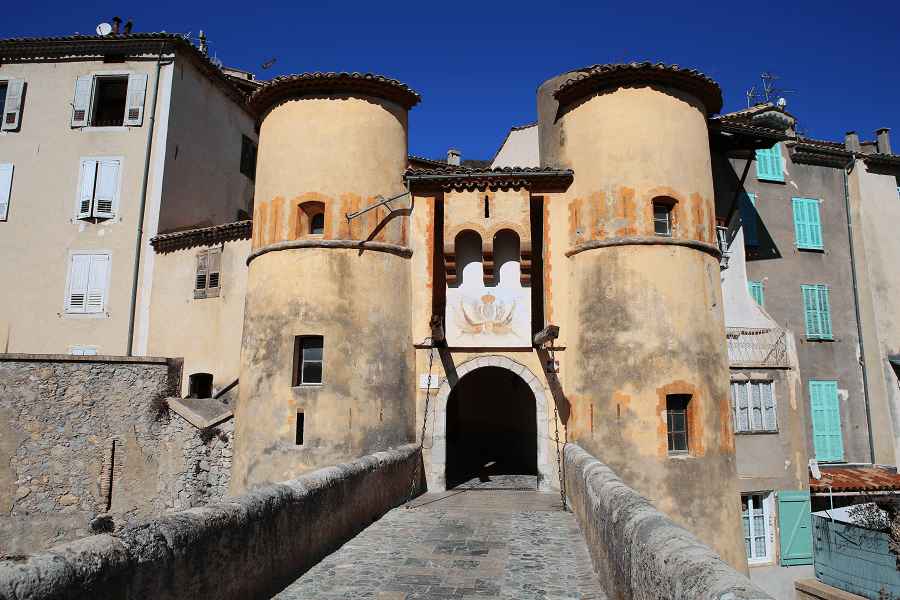The city of Font-Romeu is located in the Languedoc-Roussillon region of the Eastern Pyrenees (Pyrénées-Orientales, Occitania, France) on the Cerdagne plateau, 40 km from Andorra, 87 km from Perpignan (France) and 170 km from Barcelona (Catalonia, Spain). The city is “the heart of the Catalan Pyrenees” with panoramic views, clean air, and bright light. It is located at an altitude of 1800 m above sea level.
The city has about 6,500 inhabitants, with about 2,050 of those being permanent residents.
History of Font-Romeu
At the beginning of the 20th century, on the site of the city of Font-Romeu, there was only a patch of wasteland. In 1903, Jacques Calvet, the mayor of Perpignan and Odeillo from 1902 to 1912, built several chalets in the forest of La Calme in order to spend the weekend there with friends. Consequently, a residence, which became known as Les chalets d’Odeillo, appeared, however, the beginnings of a city was still far away.
The construction of the railway from Perpignan to the city of Bourg-Madame in 1911 was the first impulse to the appearance of the city of Font-Romeu. Two years later, the French railway company Compagnie des chemins de fer du Midi (CCFM) decided to build the Grand Hôtel de Font hotel. Thus, the vacant lot, which served as a refuge for pilgrims from Saint-Jacques in Compostelle, gradually became the meeting place of the world elite.
Today Font-Romeu is well-known for its high reputation in the world of sports and tourism since it was here in the early 20 s and was one of the first ski resorts in France.
Font Romeu is known as “the land of champions”. The city is famous for the fact that outstanding athletes lived and trained here: Martin Fourcade, a French biathlete who won four Olympic medals (two gold and two silver), 10 world champion titles, 10 crystal globes and 63 individual victories; Kilian Jornet, who is known as a “heaven rider”, a professional mountaineer and athlete, a long distance runner who made history thanks to the fastest ascent and descent of the Matterhorn, Mont Blanc, Denali, and Everest; the famous French swimmer Camille Lacourt, French athlete Colette Besson.
In 1920-1930, Font-Romeu was called the “Winter Sports Palace”, where the world elite loved to come, as it was here that one of the first and most prestigious ski resorts in France appeared. At present, Font-Romeu/Bolquère Pyrénées 2000 has 100 km of cross-country skiing tracks (22 runs: 7 “green”, 10 “blue” and 5 “red”), 41 downhill ski slopes (15 “green”, 10 “blue “, 7” red “and 9” black “) with total 58 km. The slopes are maintained by 500 snow cannons, and the resort has one snow park and four ski schools. The resort also has three separate slopes for slalom skiers and a stadium for biathlon. The resort also provides the opportunity to go night skiing – both for amateurs and for competitors with the participation of, as a rule, the Northern European countries.
During every season almost 700 thousand tourists visit the city. In general, in winter and summer, the city records up to 1 million people who spent at least one night here, said a former journalist, politician Jean-Louis Demelin.
Main attractions
The main architectural landmark of the city is the Grand Hôtel de Font built in 1915. In terms of comfort, the hotel was the envy of the palaces: there were 200 rooms, 130 of which had their own bathrooms. The hotel had a huge library, a casino, a dance hall and even a telegraph service, allowing visitors to stay in touch with the business world. On-site there were outdoor tennis courts, a golf course in the summer, and an ice skating rink in the winter. In 1920-1930, Font-Romeu was called the “winter sports palace” for the higher strata of society: elegant gestures, elegant outfits, fashionable clothes, sophisticated hairstyles — that was what they paid particular attention to even while playing sports.
“For us, this was the most exquisite secluded place, leaving the desire to return here again and again to see this forest, these mountains, this snow,” recalls Baroness Erika von Der Kettenburg, who spent almost the whole of 1925 in the Grand Hôtel de Font. And later in her article in Midi Libre she called this hotel “the best memory of youth”.
Journalists and publicists of that time more than once called the Grand Hôtel de Font ‘the perfect example of how wild nature, landscapes and a great climate transformed in order to create an architectural structure that embodied the dreams of representatives of the high society to leave the urbanized world, whilst not losing any comforts’.
“The hotel, like a huge liner, solemnly rises above the plateau of Cerdanya, the coquette villas at the foot look out onto the forest and mountains. Font-Romeu is not just the most picturesque city in the whole chain of the Pyrenees, but both in winter and in summer the air here is very dry, the light is almost always intense, and the sky is ultramarine. The Carlit Mountain range protects the city from the north winds. This is a sanatorium city, an ideal place for the treatment of asthma, recuperation during the epidemic of tuberculosis, industrialization and air pollution in large cities,” writes one of the newspapers of the beginning of the 20th century.
The Town Hall of Font-Romeu is one of the oldest buildings that has recently been completely renovated.
In recent years there has been a tendency for wooden chalets to be built in the town, including many log houses brought in from Finland and Canada, as well as an aged tree.
Each square meter of land without road access or infrastructure costs about 50 euros. When those factors are included, the price increases to a starting price of 200 euros per square meter.
Here there is also a casino with a roulette table and many slot machines, restaurants, a cinema, and a disco for entertainment.
STAPS is a scientific and technical university of physical activity in sport (Sciences de Technique, des Activités Phtisiques et Sportives).
In total, there are 21 universities in France which specialise in the professional training of athletes. The University of Font-Romeu is the most famous and unique because it offers these courses at high altitudes.
The purpose of STAPS is to develop the science of sports and sports culture, help students to determine their “training routes” depending on their skills and requests, as well as provide a high level of professional training. The university offers training in four faculties: sports professional training, coaching and teaching, physical education for working with people with disabilities, as well as sports management and organization of sports events.
Students under 25 years of age don’t pay any tuition fees. The university now has 500 students. The training program is 3 years long, plus a 2 years master’s program. The university has a course in English.
The Odeillo solar furnace is the world’s largest solar furnace. It is situated in Font-Romeu-Odeillo-Via. It is 54 metres (177 ft) high and 48 metres (157 ft) wide, and includes 63 heliostats. It was built between 1962 and 1968, and started operating in 1970, and has a power of one megawatt.
How to get to Font-Romeu
Shortest distances by car:
From Paris (tolls): 9 hr 4 min (858 km) via A20
From Biarritz (tolls): 4 h 53 min (415 km) via A64
From Bayonne (tolls): 4 h 40 min (402 km) via A64
From Dax (tolls): 4 h 41 min (381 km) via A64
From Nantes (tolls): 7 h 37 min (765 km) via A62
From Saumur (tolls): 7 h 39 min (723 km) via A62
From Bordeaux (tolls): 4 h 43 min (425 km) via A62
From La Rochelle (tolls): 6 h 13 min (602 km) via A62
From Toulouse (tolls): 2 h 33 min (182 km) via N20
From Carcassonne: 2 h 31 min (127 km) via D118
From Monaco (tolls): 5 h 58 min (580 km) via A8 and A9
From Nice (tolls): 5 h 50 min (559 km) via A8 and A9
From Cannes (tolls): 5 h 36 min (532 km) via A8 and A9
From Saint-Tropez (tolls): 5 h 43 min (504 km) via A9
From Marseille (tolls): 4 h 19 min (401 km) via A9
From Avignon (tolls): 3 h 36 min (328 km) via A9
From Montpellier (tolls): 3 h 1 min (241 km) via A9
From Béziers (tolls): 2 h 26 min (179 km) via A9 and N116
From Perpignan: 1 h 35 min (89.8 km) via N116 and N116
From Narbonne (tolls): 2 h 11 min (149 km) via A9 and N116
From Girona (tolls): 2 h 32 min (179 km) via AP-7 and N116
From Figueres (tolls): 2 h 4 min (139 km) via N116
From Andorra (tolls): 1 h 28 min (72.8 km) via N20
Main information
Population: 2000
Height: 1800 m
Language: French
Currency: Euro
Visa: Schengen
Time: Central European UTC +1, in summer +2
Postal Code: 66124/66120
See here Pyrenees travel guide
See here France travel guide
See here Spain travel guide







